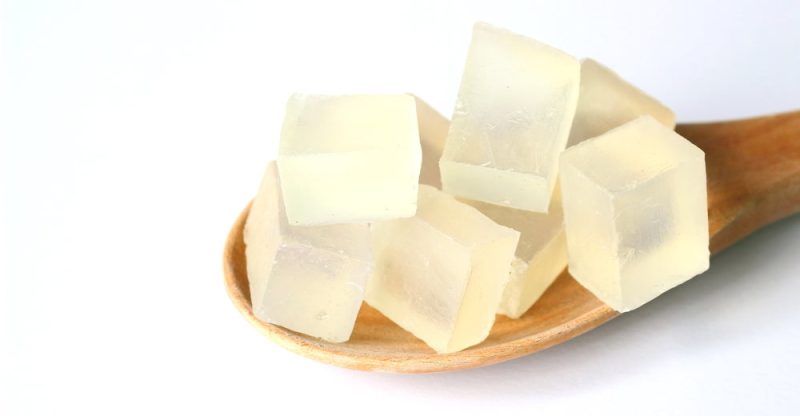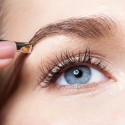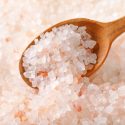What Is Glycerin?
Glycerin is a common ingredient in moisturizers and shampoos. It helps maintain skin health, although some people also use it for hair care treatments to lock moisture into the fiber of the hair shaft instead of allowing it to evaporate out.
Glycerin is a good option if you’re seeking a new component to add to your natural skincare regimen. Topical use of this chemical has been shown to ameliorate dry skin conditions and even raise epidermal barrier function in studies (a key aspect of optimal skin health).
It works as an emollient to soften and moisturize the skin. It may also aid in preventing inflamed, flaky, or itchy skin.
Glycerin soap, for example, is a natural product that includes this component. There are many reasons why you should consider including it in your skincare routine if you haven’t previously.
How does Glycerin Work?
Carl Wilhelm Scheele, a German scientist, discovered this molecule in 1783, but it wasn’t until 1811 that Michel-Eugène Chevreul, a French chemist, coined the word “glycerin.”
What exactly is it? Glycerin, often known as glycerol or glycerol, is a colorless, odorless, sweet-tasting liquid that is non-toxic.
What is the composition of glycerin? Animal fat or vegetable oils may contain this natural chemical, such as palm, coconut, or soybean oil.
Propylene may also be used to make it synthetically.
Three carbon molecules, eight hydrogen molecules, and three oxygen molecules make up the glycerin structure (C3H8O3). It’s found in triglycerides and phospholipids in large amounts.
Glycerol and fatty acids are released into the circulation when the human body utilizes stored fat as an energy source.
Typical Applications
What is the purpose of glycerin? Its most well-known use is in skincare products.
A glycerin soap or a glycerin cream should be easy to come by at your neighborhood pharmacy. You’re probably already acquainted with the glycerin soap foundation if you like producing your own soap.
As a humectant, this chemical is often found in cosmetic goods.
In addition, glycerol is occasionally employed as a solvent, sweetener, or humectant in food and drinks. It may also aid in the preservation of food and cosmetics.
This component is typically found in the following products:
- facial cleansers
- lotions and creams for the skin
- serums for the skin
- toners for the skin
- soap
- cleanses the mouth
- a cough syrup
- milk that has been condensed
- meats that have been processed
- goods made from soybeans
- condiments
- baked items from a bakery
- liquid for electronic cigarettes
- antifreeze
Are you looking for a place to purchase glycerin? Pure liquid glycerin is available online and at many pharmacies.
How much does glycerin cost? For roughly $7 to $8, you can get a small bottle of 100 percent pure glycerin for topical usage (around eight ounces).
You may also locate brands that aren’t made from animal fat at that low price.
Benefits
This chemical pulls water to itself as a humectant. What are the implications for skin (and hair) health?
It aids in preventing moisture loss and the alleviation of skin dryness.
The following are some of the possible skin advantages of glycerin, according to a 2008 research published in the British Journal of Dermatology:
- enhances skin hydration
- skin barrier function is improved
- protection against irritants on the skin
- wound-healing processes are accelerated
It is also often advised for use on some of the most resistant dry spots, such as calluses on the hands and feet.
If you want to give it a go, seek natural products that include this hydrating substance. You may easily locate a product that includes this component for one or more phases of your process, ranging from toner to face cream.
Side Effects and Risks
Is glycerin a safe substance? Most emollients, including it, can be used safely and efficiently without causing any adverse side effects.
However, any topical product might cause burning, stinging, redness, or irritation. Seek medical assistance if any of these symptoms continue or worsen.
Some individuals believe that glycerin may help you whiten your skin. However, it’s unclear if this is true.
A severe glycerin allergy is uncommon but get medical attention right once if you have major allergic response symptoms.
Conclusion
- Glycerin (also known as glycerol or glycerine) is a clear, odorless, sweet-tasting liquid that is non-toxic.
- What is vegetable glycerin, and how does it work? Coconut, soybean, or palm oil are examples of non-animal sources. This chemical may be derived from animal fat or synthesized.
- It’s in food, but most of the items that contain it aren’t considered “healthy.” Condensed milk, commercially baked foods, and processed meats are among them.
- It may be used on the skin to avoid dryness or treat dry and/or irritated skin.
- Many natural cosmetic products include it, and it may also be used to make handmade items like soap.
- Glycerin may also be used on hair to provide moisture and prevent dryness.
Frequently Asked Questions
Is glycerin good for your skin?
A: Glycerin is a natural humectant that draws moisture from the air and can make your skin soft. It’s great for dry, sensitive skin but not recommended on oily or acne-prone areas of your face.
Is glycerin good for skin every day?
A: Yes, glycerin is usually safe to use on skin as long as it does not get in the eyes.
What are the side effects of glycerin?
A: There are no side effects with glycerin.
FDA Compliance
The information on this website has not been evaluated by the Food & Drug Administration or any other medical body. We do not aim to diagnose, treat, cure or prevent any illness or disease. Information is shared for educational purposes only. You must consult your doctor before acting on any content on this website, especially if you are pregnant, nursing, taking medication, or have a medical condition.
HOW WOULD YOU RATE THIS ARTICLE?





